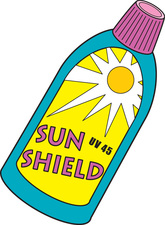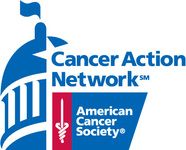 I recently read an article published in the New York Times about research that provides evidence that cancers should be classified by their gene mutations rather than where they originate within the body. This study is regarded as “a landmark that will stand the test of time” according to Dr. David P. Steensma, a leukemia researcher at the Dana-Farber Cancer Institute.
The study has taken place over the past year examining endometrial cancer, breast cancer, and ovarian cancer. The data shows that these three cancers have similarities in DNA and that the deadly endometrial tumors are similar to breast cancer and ovarian cancer. What does this mean? It means that the same treatments could possibly be used to fight all three cancers.
The idea that genetic mutations should be scrutinized when diagnosing cancer has always been popular among doctors, according to the article. But for the first time, this study provided proof to back up the claims and allows for further exploration into other cancers such as Leukemia.
Overall, this is a huge step in the fight against cancer. Doctors, now more than ever, have a “playbook” to look at when observing cancers and their changes. The basic pathways and mutations are no longer a mystery which allows doctors to have a better chance of prescribing treatment that the cancer will respond to.
As I am not a doctor, for more information I highly recommend reading the article Cancers Share Gene Patterns, Studies Affirm on the New York Times website. We are that much closer to ending this battle with a victory.
Link to article: http://www.nytimes.com/2013/05/02/health/dna-research-points-to-new-insight-into-cancers.html?nl=todaysheadlines&emc=edit_th_20130502&_r=0
 It’s that time of year again. The days are getting longer, the air is warmer, baseball teams are back on the field, and the sun is shining—yes my friends, it is almost summer vacation. Summer—it’s the time for relaxation, outdoor activities, time with friends, and some sweating. But, there is a harsh reality that we need to keep in mind. 42% of people get sunburned at least once a year. I know what you’re thinking: rub some aloe on it, you’ll be fine. But do you really know what happens to your skin when it gets too much sun? A person's risk for melanoma—the most serious form of skin cancer—doubles if he or she has had five or more sunburns. I am not saying five or more sunburns in one year, no I mean in a lifetime. Research shows that one sunburn can cause long-lasting damage to the skin. Three different types of skin cancers are related to sunburn. The two most common nonmelanoma skin cancers, basal cell carcinoma and squamous cell carcinoma, are directly correlated with sun accumulation over many years. The most common locations for basal cell carcinoma and squamous cell carcinoma tumors are sun-exposed areas: the face, ears, and hands. Melanoma is different. The sun exposure pattern believed to result in melanoma is that of brief, intense exposure –a blistering sunburn—rather than years of tanning. So what’s to learn from this? Your mom was right; it’s great to play outside, but put on sunblock! Here are some helpful tips to stay sunburn free this summer: - Seek the shade, especially between 10 A.M. and 4 P.M.
- Do not burn.
- Avoid tanning and UV tanning booths.
- Use a sunscreen with an SPF of 15 or higher every day.
- Apply 1 ounce (2 tablespoons) of sunscreen to your entire body 30 minutes before going outside. Reapply every two hours.
- Cover up with clothing, including a broad-brimmed hat and UV-blocking sunglasses.
- Keep newborns out of the sun. Sunscreens should be used on babies over the age of six months.
- Examine your skin head-to-toe every month.
- See your physician every year for a professional skin exam.
 It isn’t all completely clear—the days leading up to those words are still a blur. A blur bleeding together and crashing to a halt, “You have bad cells—cancer.”
I was thirteen when I heard the news. Actually, I overheard the results over a phone call meant only for my mother. Regardless, I knew the truth. It was overwhelming to say the least. Actually looking back, I can say I didn’t have a clue. CANCER?
Let’s rewind. I was in seventh grade at Waynesboro Area Middle School, about to begin my eighth season of community softball, and scheduled for my annual physical exam. Everything was routine—my weight, normal; my height, short; asthma, had it. Then a pause. My right temple. The doctor moved in close. It was light-pink in color, raised a centimeter off of my skin—nickel size.
An urgent surgery was scheduled. Five blue stitches snuck out from under my bangs. A softball accident, I told everyone—a very believable story. I didn’t mention the awaiting biopsy results. Until a few weeks later, when another appointment was made with a plastic surgeon, they had to go deeper, a few inches. I had bad cells—skin cancer.
Those cells are gone. The scar will forever remain. Look closely, you’ll see it—but if you don’t, you’d never know. Ask me about it? It’s a battle scar. What battle? I’ll probably tell you a story about how accident prone I am. Throw in the other eight surgeries I’ve had since I broke my wrist in sixth grade and hope you forget you asked that question or at least notice that I’m talking in circles to avoid the answer.
But yes, the truth is I’ve had a run in with cancer. BUT I do not fight back for myself. I’ve heard the stories others have told, I’ve seen the loss in their eyes. I fight back because my cancer was nothing compared to the world that my eyes were opened to after hearing the news. My cancer had an easy fix: no chemo, radiation, or long-term medications. But even without the extensive medical procedures I know the effect the word “cancer” had on me and those around me.
It is pain no one should ever have to experience. Have you ever seen a person’s face when you tell them those three dreaded words? I hope you never have to. Their reactions will last just as long as your scars.
I’ve had other surgeries since that year—more cancer scares. In total, I have four additional scars from my battle. But please, I do not want your sympathy, I do not want extra attention, I do not want your condolences. I am one of the lucky ones. I’ll fight back until everyone’s cure is as simple as my own—until “I have cancer” is a phrase of the past. That’s what I want from you—your support for everyone who has fought, is fighting, and will fight cancer. Fight back—it’s worth it.
 Let’s talk about tobacco. Cigarettes, cigars, secondhand, and smokeless tobacco products are all proven to cause cancer. Actually, in 1982 the United States Surgeon General’s reported claimed that “Cigarette smoking is the major single cause of cancer mortality [death] in the United States.” It’s frightening because this statement is as true today in 2013 as it was over thirty years ago.
Use of tobacco products has been linked to over fourteen different types of cancer which include: cancer of the lungs, mouth, lips, nose and sinuses, larynx, throat, esophagus, stomach, pancreas, kidney, bladder, uterus, cervix, colon/rectum, ovary, and even acute myeloid leukemia. One in five deaths in the United States are caused by tobacco products which equals approximately 443,000 deaths every year. The figures are very sad—actually the data makes me angry.
In case you’re unaware, use of tobacco products (with the exception of secondhand smoke) is completely voluntary. Yes, I said it. People do not have to smoke or chew. I hate to say it, but it almost seems as if people that choose to use these products are choosing to face cancer—especially since every package includes a label very clearly explaining that use of tobacco products will cause cancer.
Lung cancer is easily the most preventable form of cancer death in our society. Why? Because if people would just choose not to smoke about 30% of all cancer deaths and 87% of lung cancer deaths would be eliminated. Nothing frustrates me more than when I see someone smoking/chewing knowing that people die from seemingly unpreventable cancers every day. Why anyone would choose cancer is beyond me.
For more tobacco related cancer facts go to: http://www.cancer.org/cancer/cancercauses/tobaccocancer/tobacco-related-cancer-fact-sheet
 Please excuse me for my absence lately; I’ve been slightly busy helping the American Cancer Society raise $43,836.87. That’s right, I said $43,836.87 (you can’t tell, but my smile reaches from ear to ear).
The twelfth annual Relay for Life at Lebanon Valley College began on Friday, March 23rd at 4:00 p.m. and continued through Saturday, March 24th at 4:00 a.m. The event, while nothing new to the campus, was a goal bursting experience to say the least. A record breaking total of 64 teams arrived in the Arnold Sports Center to help fight back against cancer. Those 600 participants filled the gym to show their support, share their stories, and take a stand against the disease and all of its destruction—as well as celebrate in its failed attempts to steal away a part of our lives. And in the end, those twelve hours made a difference.
While we cannot necessarily see the effects of our hard work right this minute, I am positive it will not go unnoticed. If you weren’t at LVC’s Relay for Life “Wish Upon a Cure” you definitely missed out on a life changing experience. Whether it was the rap sung by a fighter’s mom, the speech given by LVC alum, Amanda Musser, who had just had breast cancer surgery 3 days prior, or just the fact that there was a “huge wall of purple” –group of survivors— sitting in the middle of the gym; the sense of community and hope has never been stronger inside of those walls.
My favorite part of the twelve hour journey known as Relay for Life has always been the Luminaria Ceremony, and this year did not disappoint; although, it was slightly different than any before. This year, instead of standing with my family and friends around the track honoring those who have battled the disease, I was on stage. As the words, “If you are here for your mother, father, sister, brother, grandparent, uncle, aunt, spouse, family member, friend, anyone else” stumbled out of my mouth, I grew more as a person than ever before. Actually seeing each individual luminaria glow with light after every title was called is an experience I will never forget. For the first time in a long time, I remembered that each person that receives that diagnosis is not just another number—they are a person. A person with a family, best friend, dreams, anticipated years ahead of them that were likely taken for granted by all. I was honored to be able to personally give each person their recognition.
Today I’ll admit, my feet are still a little sore and my legs are pretty stiff—but who am I to complain? Every day millions of patients across the world are enduring treatments, surgeries, and procedures that inflict far more pain on their body than my twelve hours on my feet. I think it was the reminder I needed—cancer never sleeps, and in order to fight back, sometimes, neither can we.
 35,400 minutes. 590 hours. That’s right, there are only 24 days until this year’s Relay for Life at Lebanon Valley College. In less than a month, hundreds of members of the LVC community will pack into the Arnold Sports Center for the 12th annual Relay for Life “Wish Upon a Cure.” It’s crunch time! Relay for Life is an organized, community fundraising walk that incorporates different teams of people that “relay” for hours (3 p.m. to 3 a.m. at LVC). Participants give up their own sleep to demonstrate that cancer never sleeps and therefore neither should we. The best part about Relay for Life is that participants do not come empty handed. After all, in addition to being a family-friendly, community oriented, time for remembering and celebrating—Relay is most importantly a fundraising event to fight back against the one thing that brings all of the “relayers” together—cancer. LVC Relay for Life has set its fundraising goal at $43,500. While each participant in Relay for Life pays a $10 registration fee, it takes a lot more than just $10 a person to meet a goal of $43,500. The answer? Fund-raise! (It’s actually not that hard.) Here are some tips for fundraising that are quick, easy, and effective: (They worked for me; I’m already close to $900.00) - Ask businesses if you can set up a donation can
- Use your Christmas card list—mail out a letter asking for donations to each person
- Go door to door
- Ask your teachers, co-workers, friends, and family
- Homemade cookbooks bearing your team name
- Homemade crafts
- Baked goods
- In Honor, In Memory, and In Support of Sun and Moon Donation Cards (see your team development chair or staff partner)
- Services (yard work, house cleaning, babysitting, etc.)
- Activities (bowling, skate parties, trivia nights, etc.)
Profits raised at Relay for Life go to the American Cancer Society to help fund programs such as Hope Lodge, Road to Recovery, Look Good…Feel Better, Reach to Recovery, and provide college scholarships. Every dollar counts and makes a difference. So ask! (the worst they can say is “no."
 The word awesome seems to lose its definition in today’s world. Think about it; when there’s no line at your favorite restaurant your initial reaction is, “Awesome!” Or when the sport team you have watched suffer through agonizing losses for countless years finally brings home a trophy, it’s, “Awesome!” But when was the last time you were truly in awe about something?
I recently volunteered at the CCRF (Children’s Cancer Recovery Foundation) in Harrisburg, PA. I had been looking into the many different cancer oriented non-profit organizations in Pennsylvania and was ecstatic to find an organization so close to LVC, just a few miles on I81 to be exact.
The Foundation is currently established in the United States, Canada, the United Kingdom and Germany and is also the largest supplier of gifts to children with cancer in North America through the Bear-Able Gift Program. However, the organization does not stop with just toy drives, they also have the Helping Hands Fund to provide families with emergency payments to help them keep up with bills and travel expenses. To top it off, the organization also began the Camp Scholarship Program which allows children in remission to basically learn to be kids again by allowing them to attend a camp of their choice.
I spent the first hour of my visit talking with Doug Runkle, Vice President and Chief Operating Officer for the foundation, about where exactly the organization came from; a story that changed my life. Mr. Runkle engaged me in a conversation about Greg Anderson, who was diagnosed with stage IV lung cancer in 1984. After meeting with his surgeon Greg Anderson was given a “terminal” diagnosis—only 30 days to live. His story reminded me of Tim McGraw’s “Live Like You Were Dying” song. But really—what do you do when you get that kind of news?
The mission of the Cancer Recovery Foundation is to use a system known as “integrated cancer care” to help people prevent and survive cancer. It is a technique formed through interviews with over 16,000 cancer survivors who shared their strategies for fighting back against the disease without relying solely on medical treatment. These strategies created an international cancer recovery movement, a movement led today by Greg Anderson. Yes, the man that was supposed to die in 1984 is still alive today (and active), 29 years after receiving his “death sentence.”—Awesome! Greg Anderson is the author of eleven books that have been translated into 31 languages. His work includes international Best Sellers The Cancer Conqueror; Cancer: 50 Essential Things to Do; and The 22 (Non-Negotiable) Laws of Wellness.
Years after his diagnosis, Greg Anderson was asked to speak at a convention to parents of children with cancer about how to cope with the pain. Upon arriving at the venue however, he realized he had no idea what to say to the parents. Greg Anderson, a father himself, could not imagine the pain they were going through even though he had just dealt with his own life threatening illness. That’s when he decided to create The Children’s Cancer Recovery Foundation, that’s where it got its start.
Many of the most important decisions about cancer are made outside of your doctor’s office. Instead, they are made by your state legislature, in Congress and in the White House. ACS CAN empowers regular people to be part of the growing national movement that is fighting back against cancer. ~American Cancer Society Cancer Action Network
 Politics has never been my thing. The sight of angry men debating over the issues plaguing our country makes me cringe instantly. Not to mention when someone instigates a raging conversation with my blatantly conservative father. That being said, I was surprised to find out that cancer was one of the topics addressed in President Barack Obama’s State of the Union address—maybe I should start paying more attention to politics. Everyone knows that cancer is a medical issue; that it takes doctors, scientists, researchers, and hospitals to fight back against the disease. I think it’s also safe to say that cancer is very much a social issue. Whether we are family, friends, neighbors, co-workers, or even acquaintances with someone, when cancer comes into the picture it affects an entire community. A community that organizes events to promote awareness, raise money, and increase support. But, is cancer really a political issue that should be addressed by our president? The American Cancer Society answers, “Yes.” After all, politics are what organize and govern the country that we live in. They decide what rules citizens and organizations must follow and how much money they get to spend. Yes, cancer is very much a political issue and no matter what party you choose to associate with, funding for biomedical research is important. Funding, however, is not the only issue politics addresses on the topic of cancer. It plays a much larger role. Politics decides the age that someone can purchase cigarettes and also who can use a tanning bed in the United States. It also decides what the tax will be on each of these activities which have been proven to cause cancer. By increasing the tax more Americans will stop participating in habits harmful to their bodies (let’s face it, Americans are cheap). By setting these rules the government helps save lives. Currently, the main driving force behind the political side of cancer is ACS CAN (American Cancer Society Cancer Action Network). LVC joins this force by having an Advocacy Committee as part of CAC. The Advocacy Committee writes letters to local legislators and attends lobbying events to make it known to our politicians that cancer is a priority and needs attention. This year LVC sent letters to every member of the House and Senate during Breast Cancer Awareness Month to ask for increased funding for cancer research. Volunteers of ACS CAN have: - Led to 35 states as well as Washington, DC and Puerto Rico to go smoke-free
- Supported a 62-cent increase in the federal cigarette tax, preventing 1.9 million children from becoming lifelong tobacco users
- Helped secure U.S. Food and Drug Administration regulation of tobacco products
- Increased federal cancer research funding for the National Institutes of Health
Politicians are our voice. If we say we want more funding for cancer research—that's what we'll get. But we have to speak up, because together we CAN find a cure for cancer.
Talia Joy Castellano is an exceptional 12-year-old girl, with articulateness, wit and serious makeup skills beyond her years.~ The Huffington Post
As I was scrolling through my Facebook newsfeed I came across a post from the Ellen DeGeneres Show which featured this video and I was reminded of something I was told while volunteering at the Children’s Cancer Recovery Foundation in Harrisburg, PA—sometimes it takes something other than medicine to defeat cancer, like staying positive. Ellen DeGeneres, a daytime talk show host and also spokeswoman for the “easy, breezy, beautiful” CoverGirl makeup line is helping to do just that with Talia Joy Castellano, who is currently fighting cancer.
Talia Joy Castellano, is a 12 year old girl currently suffering from two different types of cancer—neuroblastoma and preleukemia. Her chemotherapy treatments which she has been receiving since 2007 have left her bald, a horrendous blow to any seventh grade girl. However, Talia uses her exceptional makeup skills to help her remain confident and enthusiastic through her fight with cancer. She even produces YouTube makeup tutorials that describe different types of makeup and application techniques she recommends for girls to try.
I began watching her videos on YouTube the other day, not for makeup advice but because I find them truly inspiring. Throughout all of her videos she remains a joyful, hopeful, even comical 12 year old girl that never lets her smile disappear. Perhaps that’s why Ellen was so drawn to her. Watch any of her videos and you won’t be surprised to find out that Talia is an aspiring CoverGirl, and with the help of Ellen DeGeneres her dream came true.
This really got me thinking. What if there is more we can do to fight back against cancer than just raising money for medical treatments? What if a hospital isn’t necessarily the only place for hopes of a full recovery? Yes, I know we don’t all have our own TV show that brings in millions of dollars that we can give out to just anyone to help make their dreams come true, but what if we start with the people we know, the people we love? We all know someone who is battling cancer; how can we help them stay positive and help their dreams come true? Wouldn’t it be awesome if simply making their day or helping them reach a goal would push back cancer just as much as a medical treatment? I’d say it’s worth a shot!
|








 RSS Feed
RSS Feed